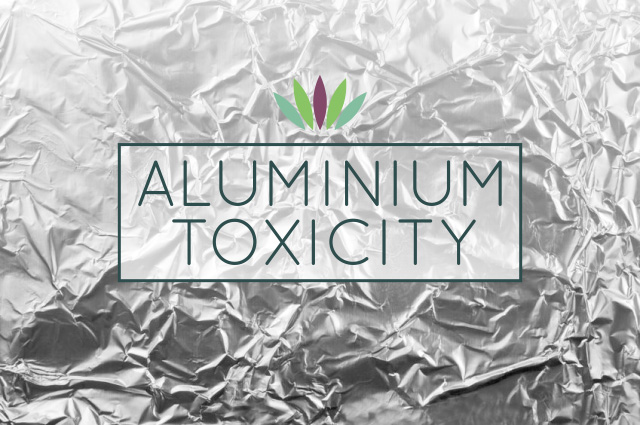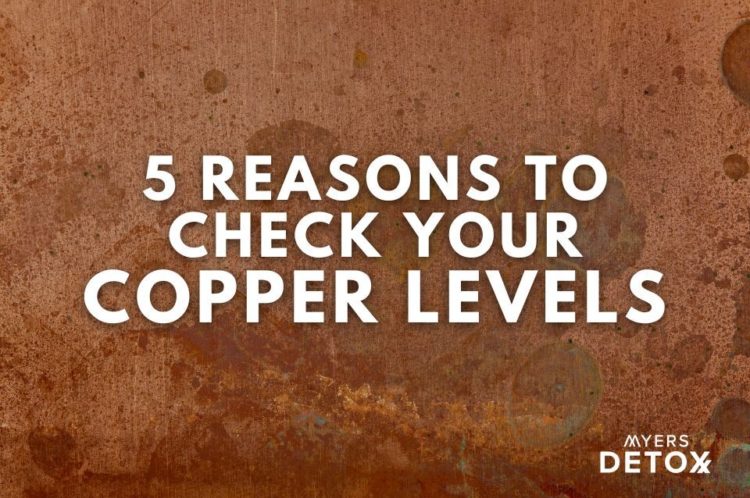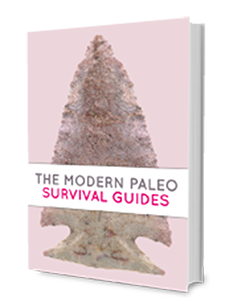Aluminum Toxicity

Aluminum is a toxic metal contributing to Alzheimer’s and other forms of dementia. It affects the brain more than any other system of the body, impairing memory and cognition. Learn about aluminum toxicity and how you can detox it from your body and prevent dementia.
Studies show that toxic metals contribute to brain diseases by producing oxidative stress and aluminum is one of the worst offenders. It is proven that aluminum is linked to degenerative brain diseases such as Alzheimer’s and Parkinson’s.
Toxic metals, like aluminum, replace nutrient minerals in enzyme binding sites. When this occurs, the metals inhibit, overstimulate or otherwise alter thousands of enzymes. An affected enzyme may operate at 5% of normal activity. This may contribute to many health conditions. Toxic metals may also replace other substances in other tissue structures. These tissues, such as the arteries, joints, bones and muscles, are weakened by the replacement process. Toxic metals may also simply deposit in many sites, causing local irritation and other toxic effects.
Aluminum impairs your body’s ability to excrete mercury by impeding your glutathione production – your body’s master antioxidant. Glutathione is your most important intracellular detoxifier, required for reversing oxidative stress. So, if your aluminum load is high, your body will potentially become more toxic from the mercury from, say, fish because you are now on “aluminum overload” and your detoxification system no longer functions well.
Sources of Aluminum
Aluminum hydroxide is used widely in pharmaceutical and personal care products. Food related uses of aluminium compounds include preservatives, fillers, coloring agents, anti-caking agents, emulsifiers and baking powders. Soy-based infant is also high in aluminum. Aluminum can be found in such every day items as:
- Aluminum foil and tin foil
- Animal feed
- Antacids
- Anti-perspirants
- Auto exhaust
- Baking powders
- Beverages in aluminum cans (soda, beer, juice)
- Bleached flour
- Ceramic plates (leaded glazes)
- Cigarette filters
- Clays like bentonite and azomite
- Color additives
- Construction materials
- Cookware
- Cosmetics
- Dental amalgams
- Deodorant Stones and crystals
- Drying agents
- Fluoridated water increases leaching of aluminum from aluminum pots and pans
- Insulated wiring
- Milk products
- Nasal spray
- Pesticides
- Processed cheese
- Table salt
- Tap water (aluminum is added to many municipal water supplies)
- Tobacco Smoke
- Toothpaste
- Vanilla powder
Symptoms of Aluminum Toxicity
Aluminum toxicity presents itself in stages. Early symptoms include flatulence, headaches, colic, dryness of skin and mucous membranes, a tendency for colds, burning pain in the head relieved by food, heartburn and an aversion to meat. Later symptoms include paralytic muscular conditions, loss of memory, confusion and various forms of dementia.
Health Conditions Caused by Aluminum Toxicity
Aluminum toxicity can cause a wide array of disorders spanning multiple health systems. It is important to recognize how greatly our bodies can be affected by this one toxic metal.
Nervous system – In animal studies, aluminum blocks the action potential or electrical discharge of nerve cells, reducing nervous system activity. Aluminum also inhibits enzymes in the brain (Na-K-ATPase and hexokinase). It may also inhibit uptake of important chemicals by nerve cells (dopamine, norepinephrine, and 5-hydroxytryptamine).
Aluminum has the ability to produce neurotoxicity by many mechanisms. Excess, insoluble amyloid beta protein (A beta) contributes to Alzheimer’s Disease (AD). Aluminum promotes formation and accumulation of insoluble A beta and hyperphosphorylated tau. To some extent, Al mimics the deficit of cortical cholinergic neurotransmission seen in AD. Al increases Fe-induced oxidative injury. The toxicity of Al to plants, aquatic life and humans may share common mechanisms, including disruption of the inositol phosphate system and Ca regulation. Facilitation of Fe-induced oxidative injury and disruption of basic cell processes may mediate primary molecular mechanisms of Al-induced neurotoxicity. Avoidance of aluminum exposure, when practical, seems prudent. – RA Yokel
Behavioral effects – Dementia resulting from kidney dialysis related to aluminum toxicity causes memory loss, loss of coordination, confusion, and disorientation.
Digestive system – Aluminum reduces intestinal activity. It is used in many antacids. An excess may cause colic.
Here is a list of just some of diseases and health issues that can be caused by aluminum toxicity:
- ALS
- Alzheimer’s disease
- Amyotrophic lateral sclerosis
- Anemia and other blood disorders
- Appetite loss
- Autism spectrum disorders
- Behavioral problems
- Breast cancer
- Learning delays
- Colds
- Colic
- Colitis
- Confusion
- Constipation
- Dementia
- Dental cavities
- Dental caries
- Dry mouth
- Dry skin
- Energy loss
- Excessive perspiration
- Fatigue
- Flatulence
- Headaches
- Heartburn
- Hyperactivity
- Hypoparathyroidism
- Inhibition of enzyme systems
- Kidney and liver dysfunctions
- Learning delays and disabilities
- Lowered immune function
- Memory loss
- Neuromuscular disorders
- Numbness
- Osteomalacia
- Osteoporosis
- Paralysis
- Parkinson’s disease
- Peptic ulcers
- Psychosis
- Reduced intestinal activity
- Senility
- Skin problems
- Spleen pain
- Stomach pain
- Ulcers
- Weak and aching muscles
How to Support Your Body’s Natural Detox Mechanisms Against Aluminum
Curcumin research suggests that curcumin has a protective effect against aluminum-induced damage by modulating the extent of oxidative stress. It also decreases beta-amyloid plaques associated with Alzheimer’s, delays neuron degradation, chelates metals, decreases microglia formation, and has an overall anti-inflammatory, antioxidant effect. Studies have shown that curcumin can help improve memory in Alzheimer’s patients.*
The following elements can also help facilitate the body’s natural excretion of the aluminum from your system:
- Calcium
- Magnesium
- Zinc
- Fluoride
- Vitamin C
- Deferoxamine
Detecting Aluminum Toxicity
If you think you’ve been exposed to this pollutant and may have high levels of it in your system, I recommended some testing to determine your level of exposure.
First, a Hair Tissue Mineral Analysis (HTMA). HTMA testing measures heavy metal and mineral concentrations in your hair, which is one of the most common places that heavy metals like to hide. It’s a good way to get a highly accurate snapshot of what’s going on in your body without invasive procedures or expensive scans.
The HTMA testing process is simple (you don’t even need to leave your house). You get a digital kit sent to your email, then you send in your hair sample, and get your results within a few weeks. Testing is both accurate and comprehensive –– an HTMA test will give you information about a wide variety of heavy metals, including [[[ADD]].
Once you have your HTMA test results, you can look at them with a trained practitioner and come up with a personalized plan to support your body’s natural detoxification.
Here are a few facts regarding aluminum levels revealed from a Hair Tissue Mineral Analysis (6):
- Most hair tests indicate elevated hair tissue aluminum. This is not surprising as it is high in clay soils, in many foods and in the environment.
- Hair levels may rise on retest hair mineral analyses during a Myers Detox Protocol program as more aluminum is mobilized from tissue storage sites.
- Aluminum may be hidden. Hidden aluminum indicators include a hair manganese above 0.04 mg%, hair iron above 2 mg%, and perhaps elevated chromium or selenium. These elements collectively are called the ‘amigos’ or ‘friends’ as they are often found together.
- A hair aluminum that is less than about 0.65 mg% or 6.5 parts per million is called a poor eliminator pattern for aluminum. This means that one has plenty of aluminum, but the body cannot eliminate it properly.
- A hair aluminum level less than about 0.25 mg% is called a very poor eliminator pattern. The meaning is similar to a poor eliminator pattern, only more extreme. That is, the body is having difficulty eliminating its aluminum, which is a bad sign. For some reason, taking antibiotics can cause this difficulty. The antibiotics build up in the liver, apparently, preventing proper elimination of aluminum.
If you think you’ve been exposed to health hazards like aluminum and it may be hiding in your system, order a Hair Tissue Mineral Analysis. From there, you can plan your next steps to reclaim your vitality.
Takeaway
Presently, humanity is exposed to the highest levels of toxic metals in recorded history, up to several thousand times higher than even several hundred years ago due to industrialization. The danger of toxic metals in our environment is greatly aggravated due to low mineral content of our food supply, as well as the contamination of our food supply.
If one does not consume preferred minerals in the diet, the body will pick up whatever toxic metals from the food, air, and water as substitutes. A key principle to remember is an abundance of essential minerals in the diet protects the body against toxic metals.
It can no longer be argued that aluminum does not have a role in neurodegenerative diseases like Alzheimer’s—the evidence is very clear and growing. It really should not be surprising that people with aluminum toxicity display many of the same symptoms as those with dementia, Parkinson’s, ADHD, autism, and other neurological diseases, because of aluminum targets exactly these areas of your brain and nervous system.
The best way to protect yourself is to be careful about your choices in food and personal products and other products that are often contaminated with aluminum.
If you are concerned about aluminum exposure, an HTMA is a great place to start. It can give you the information you need to address the root causes of physical and mental health issues.
Click Here for References+
1. Analytical Research Labs, Inc. “Mineral Information, Aluminum”. http://arltma.com/Mineral_Information/Aluminum.html.
2. Global Healing Center. “New Research Indicates Aluminum in Deodorant Linked To Breast Cancer”. March 23, 2009, Updated June 12, 2014. http://www.globalhealingcenter.com/natural-health/aluminum-and-breast-cancer/.
3. Global Healing Center. “Why I’m Concerned About the Dangers of Aluminum”. December 27, 2012, Updated on July 17, 2013. http://www.globalhealingcenter.com/natural-health/concerned-about-aluminum-dangers/.
4. Mishra, Shrikant and Kalpana Palanivelu. “The effect of curcumin (turmeric) on Alzheimer’s disease: An overview”. Department of Neurology, VA/USC 16111, Plummer Street, Sepulveda, CA, 91343. Jan-Mar, 2008. http://www.ncbi.nlm.nih.gov/pmc/articles/PMC2781139/.
5. Sharma, D, P. Sethi, E. Hussain, R. Singh. “Curcumin counteracts the aluminum-induced aging-related alterations in oxidative stress, Na+, K+, ATPase and protein kinase C in adult and old rat brain regions.” School of Life Sciences, Jawaharlal Nehru University, New Delhi, India. August, 2009. http://www.ncbi.nlm.nih.gov/pubmed/19020987.
6. Wilson, Lawrence, MD. “Aluminum – The Soft-in-the-head Mineral, a Toxic and Mainly Female Element”. The Center For Development, Inc. October 2012. (excerpted from The Mineral Reference Guide found in the back of the 2010 edition of Nutritional Balancing And Hair Mineral Analysis by the same author). http://drlwilson.com/ARTICLES/ALUMINUM.htm.
7. Wilson, Lawrence, MD. “Toxic Metals and Detoxification”. July 2014, The Center for Development, Inc. http://www.drlwilson.com/articles/TOXIC%20METALS.htm.
8. Yokel, RA. “The toxicology of aluminum in the brain: a review.” College of Pharmacy and Graduate Center for Toxicology, University of Kentucky Medical Center, Lexington, USA. 2000. http://europepmc.org/abstract/MED/11130287








